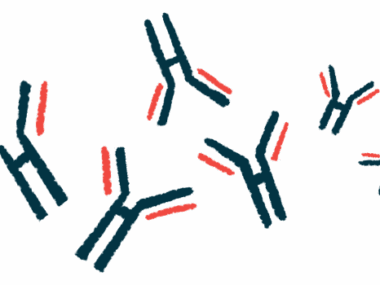Plasma exchange after relapse may ease NMOSD in children: Case series
But blood-cleaning treatment poses risk of significant side effects
Written by |

Undergoing plasma exchange, a blood-cleaning procedure, within 10 days after a relapse of neuromyelitis optica spectrum disorder (NMOSD) may help ease symptoms in children positive for antibodies against AQP4 and who do not respond well to corticosteroids.
That’s according to a small study that assessed the safety and efficacy of plasma exchange in six girls with NMOSD, one of whom — the only child treated within that short period — showed reductions in eye problems and disability.
Larger studies are needed to confirm these findings, the researchers noted, adding that the treatment’s potential risk for adverse events, or side effects, “should be considered before initiating the therapy and should be weighed against potential benefits.”
Such side effects occurred in three of the girls, one of whom had plasma exchange therapy discontinued as a result.
The study, “Safety and efficacy of plasma exchange treatment in children with AQP4-IgG positive neuromyelitis optica spectrum disorder,” was published in Frontiers in Immunology.
Investigating plasma exchange as treatment for children
NMOSD is an autoimmune disease in which proteins in cells of the nervous system are mistakenly attacked by self-reactive antibodies, or autoantibodies, produced by the immune system.
It is characterized by inflammation in the nerve that relays signals between the eye and the brain and in the spinal cord, leading to vision and motor problems.
While the most common NMOSD-causing autoantibodies are directed against AQP4, a water channel protein, research shows there may be other autoantibodies at play, such as those affecting myelin oligodendrocyte glycoprotein (MOG).
It is thought that people with AQP4-positive NMOSD have worse disease than those with MOG-positive NMOSD. These patients therefore may experience more relapses, additional episodes of new or worsening symptoms, and poorer recovery.
Treatment of NMOSD usually involves the use of immunosuppressive medications such as corticosteroids that work to reduce inflammation and abnormal immune responses, and prevent relapses. When a patient does not respond well to this type of medications, plasma exchange may help.
Plasma exchange involves removing and replacing a person’s plasma — the liquid portion of blood that contains water, salts, and proteins such as antibodies. Because this process can remove NMOSD-causing autoantibodies, it’s been used in patients with the disorder to try to prevent further disabling relapses.
The researchers noted that previous studies have suggested that “initiating PE [plasma exchange] therapy within five days of [symptom] onset may have better clinical outcomes, while the recovery rate of patients who received PE therapy after more than ten days of onset is roughly similar to that of NMOSD patients who were treated with steroids only.”
However, few studies have reported the effects of plasma exchange in children with NMOSD.
To address this knowledge gap, this team of researchers, from China, investigated the safety and efficacy of plasma exchange in six girls treated between June 2015 and June 2022. The children ranged in age from 8 to 13, and all had AQP4-positive NMOSD.
All six received high-dose methylprednisolone, a corticosteroid, directly into their bloodstream after an acute attack of symptoms.
One of them also received intravenous, or into-the-vein immunoglobulins — a treatment called IVIG. Such treatment delivers specific antibodies purified from healthy people to neutralize self-reactive antibodies in the bloodstream of patients. IVIG also blocks the abnormal production of these antibodies.
The girls were then given oral methylprednisolone as maintenance therapy. While the therapeutic approach led to some clinical improvements in each of the girls, all relapsed after a period that ranged from two weeks to more than two years.
Since they had stopped responding to corticosteroid therapy, plasma exchange was initiated. The median time between an acute attack of symptoms and plasma exchange was 29 days, ranging from 10 to 98 days.
Five of the girls underwent five rounds of plasma exchange. One underwent only two rounds due to severe thrombocytopenia, or low platelet counts. Treatment was discontinued for this child.
Only one girl experienced clinical improvement after plasma exchange. For her, the time between relapse and the start of plasma exchange was 10 days, which was the shortest in the group.
The result suggests that “early initiation of PE may be associated with a better outcome,” the researchers wrote.
Benefits of plasma exchange seen in one patient
This child had first developed symptoms of NMOSD, which included vision loss in the right eye, eye pain, and headache, at the age of 10.
At the time of plasma exchange, she was experiencing vision loss in the left eye and eye pain and had not responded to high-dose intravenous methylprednisolone.
After the procedure, the girl’s vision improved and she experienced a reduction in disability level — from relatively severe to moderate — as assessed with the Expanded Disability Status Scale.
As a rescue therapy for severe and corticosteroid-unresponsive pediatric NMOSD, the timing of [plasma exchange] initiation is crucial.
In terms of safety, adverse events were reported in three of the five girls.
The only girl showing clinical improvements experienced rash. Rash also was reported in another girl, who additionally had acute non-occlusive thrombosis, a condition in which a blood clot forms in a blood vessel, but doesn’t completely block blood flow. The other adverse event was the low platelet counts experienced by the girl for whom treatment was discontinued.
Following plasma exchange, all of the girls received immunosuppressive therapy to prevent relapses, most commonly rituximab. That medication is sold as Rituxan in the U.S. and MabThera in Europe, and is available as biosimilars.
Four girls, including the girl with clinical improvements, experienced no relapses for five months after plasma exchange and immosuppressive therapy. The two girls with longer follow-up data, up to nearly four years, had suffered one to three relapses.
These findings highlight that “as a rescue therapy for severe and corticosteroid-unresponsive pediatric NMOSD, the timing of PE initiation is crucial,” the team wrote.
“Moreover, PE has a potential risk for clinically significant adverse effects that we should be concerned about and explore potential preventive measures,” they added.
Further studies, involving more pediatric patients, are needed to confirm whether it’s safe and effective to use plasma exchange in this younger patient population.







